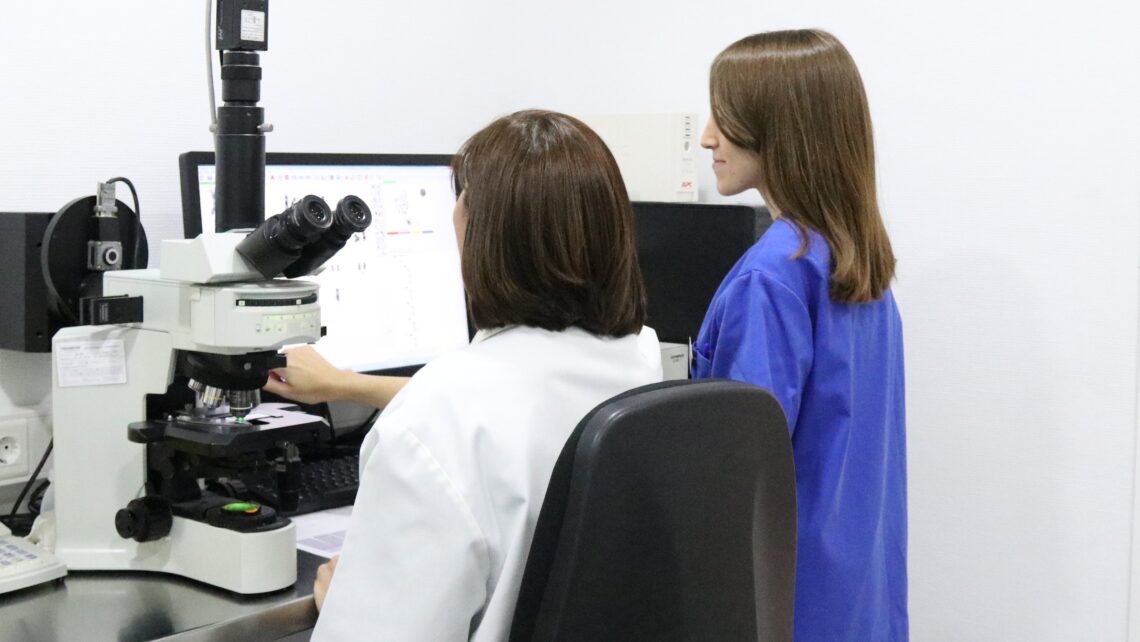Systems Biology in Reproductive Medicine publishes an IB study analyzing if ovaric stimulation modifies the risks of embryo chromosomal alterarions and mosaicism
17-02-2021

The specialized journal Systems Biology in Reproductive Medicine has published in its January issue an Instituto Bernabeu investigation on the effect of ovarian stimulation on the embryo’s chromosomal endowment. The work carried out in the Molecular Biology and Genetics laboratory of the clinic has analyzed whether there is a relationship between ovarian stimulation performed in vitro fertilization cycles (IVF) and the incidence of aneuploidies (alteration of the normal number of chromosomes in the cell) and mosaicism (mixture of chromosomally normal and abnormal cells) in embryos.
Chromosomal alterations in embryos are one of the main causes of implantation failure in the maternal uterus or of an early miscarriage. A problem Instituto Bernabeu never stop investigating. Hence the importance of the unstoppable development of analysis techniques such as preimplantation genetic diagnosis to detect aneuploidies (PGT-A) in embryos, which allow us to know the alteration before implantation in the maternal uterus. Different studies determine that the mother’s age is one of the factors increasing the presence of chromosomal abnormalities in embryos. But there’s also a relatively high incidence in young patients. For this reason, it is important to study whether there are other factors that may interfere with the proper development of the embryo apart from the mother’s age. There’re studies suggesting that ovarian stimulation process can increase chromosomal alterations, although these results are controversial. Hence the interest of this Instituto Bernabeu research.
The prestigious publication gathers the study results which included 835 blastocysts from 280 couples that were biopsied on day 5 or 6 and analyzed through preimplantation genetic diagnosis for aneuploidy detection (PGT-A). Women under 38 years of age who underwent IVF cycles with their own eggs were included. In both members of the couple, the karyotype was normal and, in the case of the male, the parameters were normal in the FISH and without alteration in the DNA sperm fragmentation study.
To evaluate the results, variables such as the stimulation protocol chosen or the type of gonadotropin used were taken into account. Once the review was done, it was found that the only variable that showed an association with the embryonic aneuploidy rate was the duration of the ovarian stimulation process. Those patients who required more days of stimulation had a lower rate of embryos with chromosomal alteration. While no significant relationship was found between the variables of the stimulation protocol studied with embryonic mosaicism.
This way, the IBBiotech research team concludes that patients who need more days of ovarian stimulation do not have a higher risk of having more aneuploid embryos.
This research has already been shown in other important scientific events. In October 2019, the study was presented at the Congress of the Association for the Study of Reproductive Biology (ASEBIR).
Effect of ovarian stimulation on embryo aneuploidy and mosaicism rate
A. Cascales, B. Lledó, JA. Ortiz, R. Morales, J. Ten, J. Ll. Aparicio, R. Bernabeu
